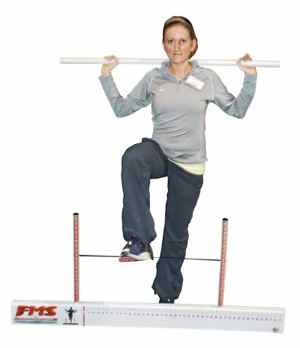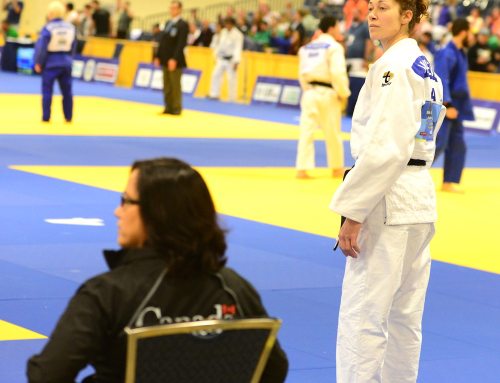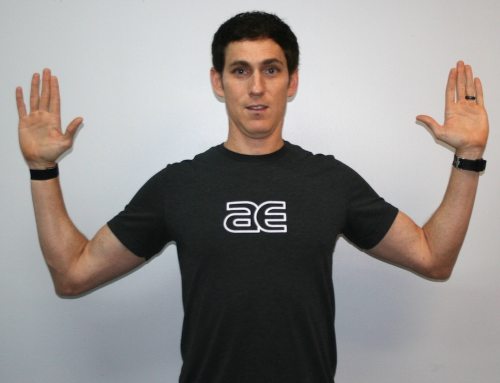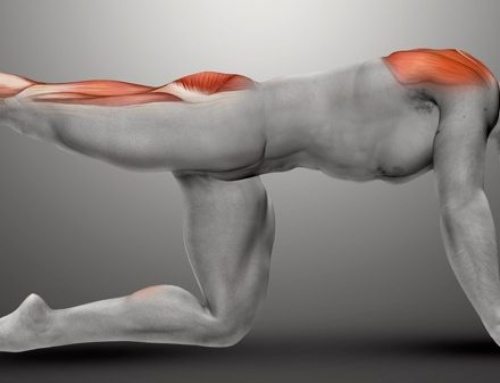
Brian Schiff, PT, OCS, CSCS
In parts one and two of this series on the Functional Movement Screen, I covered mobility and stability screening. The final piece involves assessing what is referred to as “top tier” movements.
In this column, I will summarize the three top tier movements: deep squat, hurdle step, and in-line lunge. These movements require kinetic chain integration and look at kinetic linking in an upright position so you can gain a better understanding of how everything from the ankle to the torso impacts the quality of overall movement.
Deep Squat – This pattern requires fully coordinated extremity mobility and core stability with the hips and shoulders functioning in symmetrical positions as a dowel is held overhead with locked elbows moving into a deep squat position.
To attain a 3, one must have sufficient range of motion throughout the kinetic chain: dorsiflexion in the ankles, flexion of hips and knees, thoracic ext as well as flexion and abduction of the shoulders. The criteria to master this move are: upper torso parallel with tibia or toward vertical, the squat must go below parallel, the knees are aligned over the feet and the dowel is also aligned over the feet.
Common movement flaws include the heels coming off the ground, torso pitching forward, and asymmetrical squatting patterns. Limitations with squatting can be attributed both to mobility and stability issues. Pain or previous injury may lead to altered loading or shifting of weight more toward one side as well.
Hurdle Step – This movement is designed to challenge the body’s proper stepping and stride mechanics as well as stability and control in single leg stance. The step leg must perform ankle dorsiflexion and hip/knee flexion while core stability must be present during single leg stance.
To attain a 3, the hips, knees and ankles remain aligned in the sagittal plane, there is minimal to no movement in the lumbar spine, and the dowel and hurdle remain parallel. Common movement flaws include excessive rotation of the stepping leg, loss of balance, and an uneven dowel.
In-line Lunge – This screen uses a common pattern of deceleration and directional changes and provides a quick appraisal of left/right function. The movement looks at adequate front and rear leg dynamic stability of the hip, knee, and ankle as well as core stability with a narrow base of support. It provides a significant balance challenge.
The lead leg is controlling the deceleration and therefore doing much of the work. To attain a 3, you must ensure the dowel contacts (head, thoracic spine, and sacrum) are maintained and vertical, there is no torso movement, the dowel and feet remain in sagittal plane (no rotation of the feet or sidebending of the trunk), and the rear knee touches behind the heel of front foot.
Common flaws are loss of balance, external rotation of the rear foot, loss of dowel contact, and forward or sidebending movement of the trunk. Restrictions in ankle mobility or pain in the hip/knee can limit scoring as well.
I utilize the FMS to identify weak links and imbalances in clients to improve training strategies, prevent injury, and guide return to activity recommendations. Understanding your own movement patterns is key to maximizing performance and minimizing injury risk. Remember these key points:
- Inefficient movement will cause compensations that move a joint in an unnatural manner.
- The body will always sacrifice quality for quantity.
- Compensatory movement leads to microtrauma, which over time leads to injury.
# # #
For more information on the FMS and running evaluations, contact Athletes’ Performance at Raleigh Orthopaedic. Brian Schiff, PT, OCS, CSCS is a sports physical therapist and supervisor at the Athletic Performance Center in Raleigh. The APC in Raleigh and Cary currently offer a RunSmart Assessment available in group and individual formats. For more information, visit www.apcraleigh.com or www.apccary.com.





